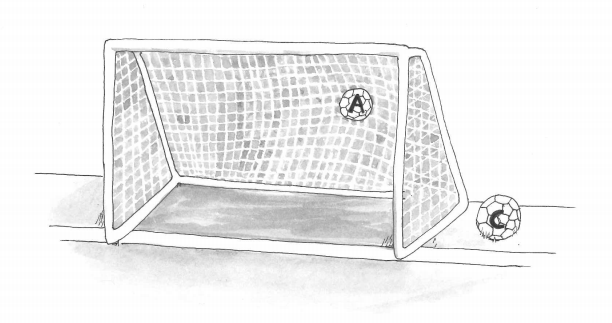Is CRLS’ Sports GPA Policy Helping?
A Look at the Pros and Cons of the GPA Requirement
April 22, 2018
One of the biggest, if not the biggest, extracurricular opportunities at CRLS is sports. To most students at Rindge, sports are more than a physical education requirement—they’re a community, a lifestyle, a passion.
However, some of these students are finding that because of their grades, they are no longer allowed to participate in school sports. 1,200 students play sports, and 3% of those were considered ineligible according to Tom Arria, CRLS athletic director.
Along with every other school in Massachusetts, the Cambridge Public School District restricts sport participation to students who are able to maintain a certain grade point average (GPA).
Ryan Saulnier, a coach, academic liaison for the Athletic Department, and a math teacher at CRLS, explained, “There are certain rules which all [student] athletes in the state of Massachusetts have to qualify for that are in regard to a certain amount of credits per semester.” He continued, saying, “The biggest difference between Cambridge and the rest of the state [is that] our qualifying number is 70 GPA, which is the highest in the Dual County League.”
Mr. Bernard (Class of 2009), a history teacher and a coach discussed CRLS’ increased GPA requirement over the state average of 60, saying, “I think in theory it’s a really good policy . . . But I think any time that kids are being left behind or ineligible because the higher standard is a 70, I think maybe then in practice it’s not as good as it was in theory so maybe it’s something that needs to be revisited.”
The goal of mandating that student athletes maintain a GPA of 70 is to hold students accountable for their learning and to make sure that extracurriculars do not get in the way of their academics.
However, many argue that the high GPA requirement is doing students more harm than good. As Saulnier sees it, “Athletics is a great vehicle to increase academic engagement, so what we have seen is certain students are not participating in school, and because their grades are not high enough, they get excluded from athletics.”
The problem at hand is multi-faceted. While it is necessary to hold students to a high standard so they will be prepared for life after high school, expecting too much could drive kids away from school as a whole. Saulnier continued, “I would like to think that involvement in athletics would encourage greater academic engagement–so we have a bit of a ‘chicken and the egg’ problem right now [in] that it seems like the students who really need to feel like they are part of the school community, possibly through athletics, are the exact ones that we are excluding.”
Mr. Arria, on the other hand, explained, “Our alignment seems to be that a student who is participating in sports has a really good chance of qualifying for the NCAA Eligibility Center and if they go Division One or Division Two has the opportunity to just go for it and not have to worry about managing [their academic eligibility].”
Some student athletes, like Maya Goldstein ‘20, appreciate the intent of the policy. Goldstein acknowledged it’s strengths, explaining, “It gives students the incentive to do well in school, because sports are a huge commitment and they meet five to six times a week,” she continued, “it’s super easy to fall behind when you’re meeting that often, when you’re spending so much time working on the sport, so then there has to be some sort of cutoff so that kids understand that you have to have a balance between student and athlete, not just athlete.”
A growing question surrounding the policy is; Why are sports the only extracurricular activity that has a GPA requirement? Mr. Saulnier broke this question down, urging, “I think we want to think of it in terms of equity. Athletics is the only part of our school that we exclude kids from because of poor grades. You can be in the school play with poor grades, you can be in the orchestra, you can be in the robotics club, but athletics is the one place where we hold kids to a higher standard.” For the vast number of students who participate in sports at CRLS, learning doesn’t stop in the classroom. After school, on weekends, during vacations, at pactices, games, and meets, skills are built and strengthened, oftentimes very applicable in real life situations. Missing practices means missing other types of lessons and affirmations as well as check-ins with peers and coaches regarding homework and classwork.
Many CRLS students and staff agree that CRLS needs to find a balance between push and pull, “catching it before it happens,” as Bernard explained, to support students the best that they can both in the classroom and out.
This piece also appears in our March/April print edition.










